Spiti valley is Known as the “abode of snow”. Spiti is a remote, high altitude, cold desert region known for its distinct geographical and cultural features. It has diverse flora and fauna, low humidity, and the region experiences short summers. The cold desert of Spiti valley is a sight to behold. Snow Leopard in Spiti valley is a solo traveler and known as the “ghost of the mountains”.
The valley offers a unique combination of breathtaking landscapes, ancient monasteries, and remote villages. In winters it becomes extremely cold and windy. This place witnesses a significant difference in day and night temperatures. Spiti valley is the prime habitat of snow leopards.
The Majestic Snow Leopard in Spiti Valley
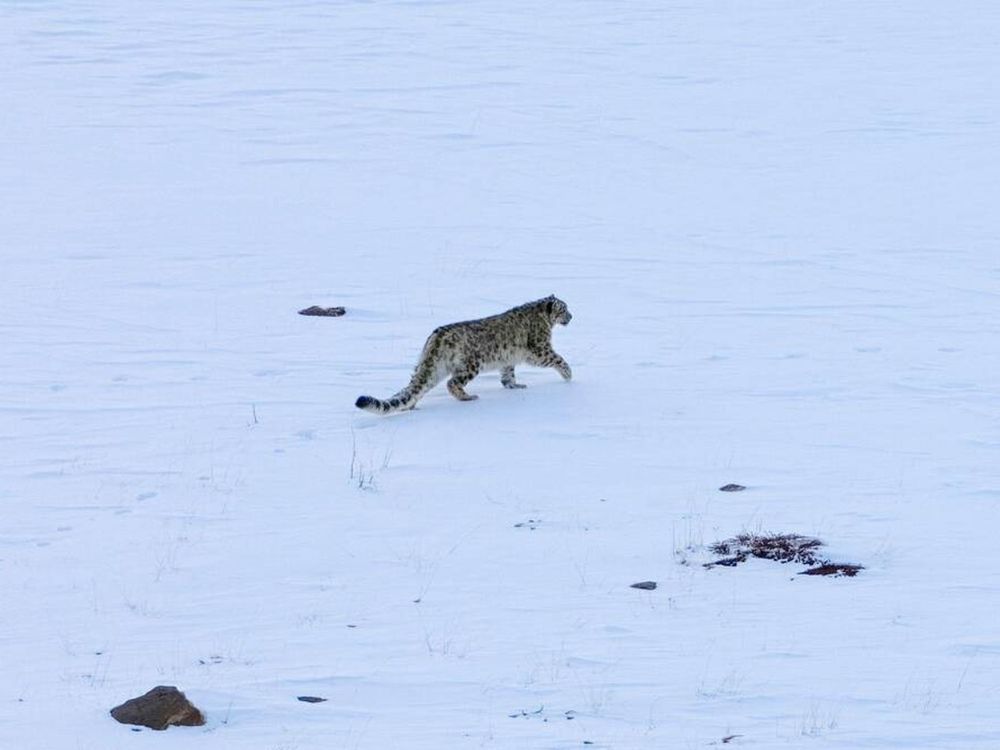
Spiti valley is heaven for snow leopards. Winter trip to Spiti valley has its own charm and challenges. Snow leopards are extremely shy and silent creatures inhabiting steep slopes. The temperature in Spiti valley can drop to -30°C making it one of the harshest living conditions. They are easily camouflaged and have the potential for long jumps. Snow leopards in Spiti valley usually prey on blue sheep, Ibex, Himalayan tahr, marmot, pika, hares and small rodents. They live in high-altitude mountainous terrain, at an elevation of 3,000m-4,000m.
Best Time to Spot Snow leopards

The winter months (November to March) are ideal for snow leopard spotting. During these months Snow leopards descend to lower altitudes in search of prey due to scarcity of food in high altitude regions, it increases the chances of sighting. The bodies of snow leopards are adapted to extreme climatic conditions. Snowfall transforms the valley into a white wonderland. Winter season has challenging weather conditions but it increases the chances of spotting Snow leopards in the valley.
Snow Leopards are the apex predators that help maintain the ecological balance in Spiti valley. They prey on herbivores like the Himalayan blue sheep (Bharal), and Ibex and keep the population in check and ecological balance.
During this time Snow leopards move closer to human settlements and river valleys, making them easier to track. Professional guides and trackers in villages like Kibber, Langza, and Tabo organize snow leopard expeditions for wildlife enthusiasts.
Pro Tip: Be prepared for extreme cold, with temperatures dipping below -20°C. Warm clothing, sturdy footwear, and patience are essential for a successful snow leopard tracking experience.
Spiti Valley Wildlife
Spiti Valley wildlife includes Himalayan ibex, Blue sheep (bharal), Tibetan wolf, Red fox, Eurasian Lynx, Tibetan Sandgrouse, Himalayan wolf, Long tailed marmot , Wooly Hare, Pika. The bird species found are Kestrel, Finches, Chough, Larks, Red starts.
Read to know more about How to reach Spiti Valley.
Conservation of Snow leopard
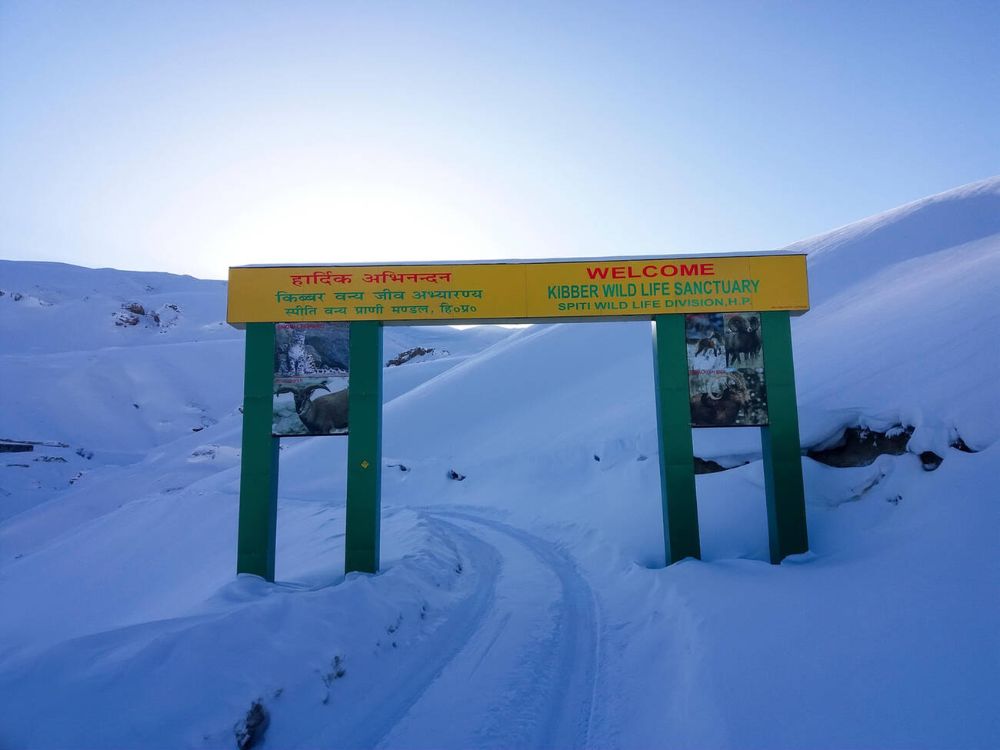
Snow Leopard is a solitary, and the most enigmatic cat living in the high altitudes of Himalayas. They are vulnerable species according to the IUCN status. Snow leopard are highly at a threat due to poaching.
The local communities in Spiti valley, along with conservation organizations have taken initiatives to protect snow leopards. There are approximately 500 Snow leopards in the higher reaches of Indian Himalayas.
There are several Snow Leopard conservation implemented to conserve Snow leopards at local and national level by the Ministry of Environment and Forests (Government of India). Project Snow leopard was introduced in 2009, to conserve the snow leopard and its habitat by integrating conservation efforts with the livelihoods of local communities.
And at local level conservation, Local communities and tourists are educated on the ecological importance of snow leopards. Schools in Spiti Valley incorporate wildlife conservation into their curriculum, fostering a new generation of conservationists.
Villages like Kibber and Chicham organize guided snow leopard tracking tours, involving local herders as trackers and guides. This generates income for the community, incentivizing them to protect wildlife.
Trekking in Spiti Valley
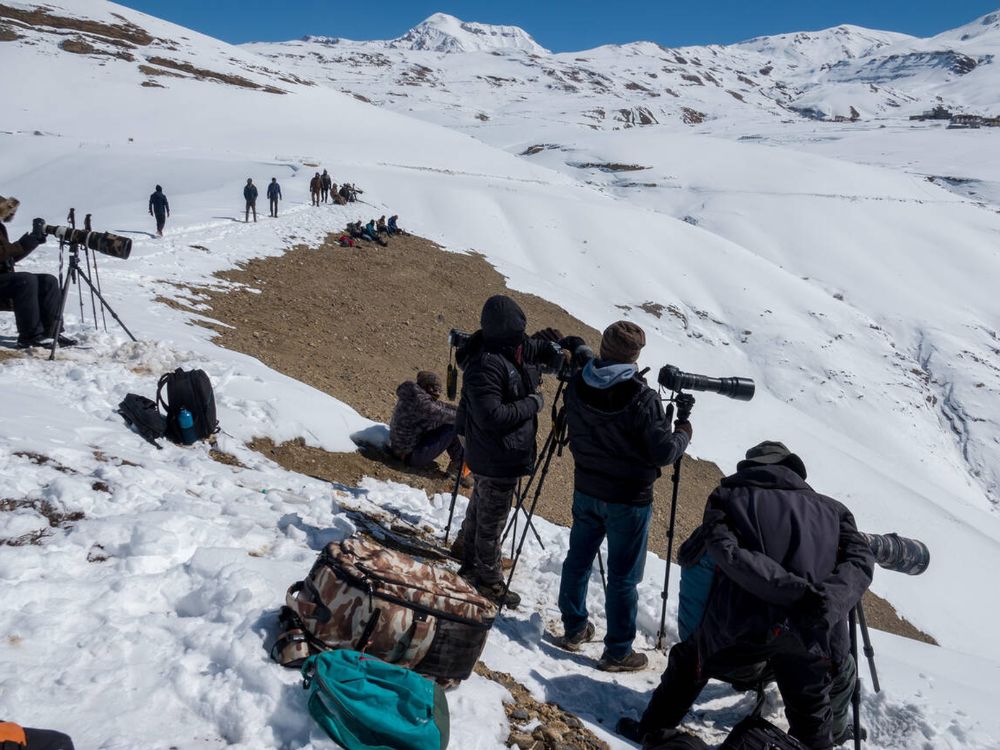
Spiti valley is paradise for snow trekkers and adventure enthusiasts. Spiti valley is the holy grail for bikers. You can indulge in adventure activities such as skiing, ice skating, and snowboarding. Spiti valley in winters gets covered with snow blankets and one cannot miss to see nature’s raw beauty.
Spiti Valley Trekking can be done in Kibber village. You can trek through snow-covered landscapes in the Kibber Wildlife Sanctuary to spot the elusive snow leopard and witness Witness other high-altitude wildlife, including Himalayan ibex, red foxes, and Tibetan wolves.
Let’s get dive into this snow leopard adventure this winter season and trek through the rugged and stunning landscapes of Spiti Valley.
Tips for Spiti Valley Trekking
- Prepare for High Altitudes, spend a day or two acclimatizing in Kaza or nearby villages.
- Stay hydrated and avoid overexertion in the initial days.
- Pack warm clothing, sturdy trekking boots, and trekking poles are essential.
- Carry sunscreen, sunglasses, and a first-aid kit.
- Seek permission before entering monasteries or photographing locals.
- Support eco-friendly practices and avoid littering.
- You can hire a local guide, a guide will bring invaluable knowledge of trails, weather, and cultural nuances.
Best Time for Trekking in Spiti Valley
Winter (November to March): Suitable for short treks and snow leopard expeditions. Extreme weather conditions make long treks challenging. But here are some of the possible options.
- You can trek through snow-covered landscapes in the Kibber Wildlife Sanctuary to spot the elusive snow leopard.
- You can trek across one of the world’s highest suspension bridges, connecting Chicham and Kibber.
- You can even try a short but scenic trek to the frozen Dhankar Lake, starting from Dhankar village and witness the stunning views of the frozen lake surrounded by snow-clad peaks. Visit Dhankar Monastery, perched precariously on a cliff.
Summer (May to September): Summer Ideal for most treks, as the weather is pleasant and trails are accessible. High mountain passes like Kunzum and Pin Parvati remains open.
Your Winter Spiti Guide is just a click away!
Best Places to spot Snow Leopard in Spiti valley
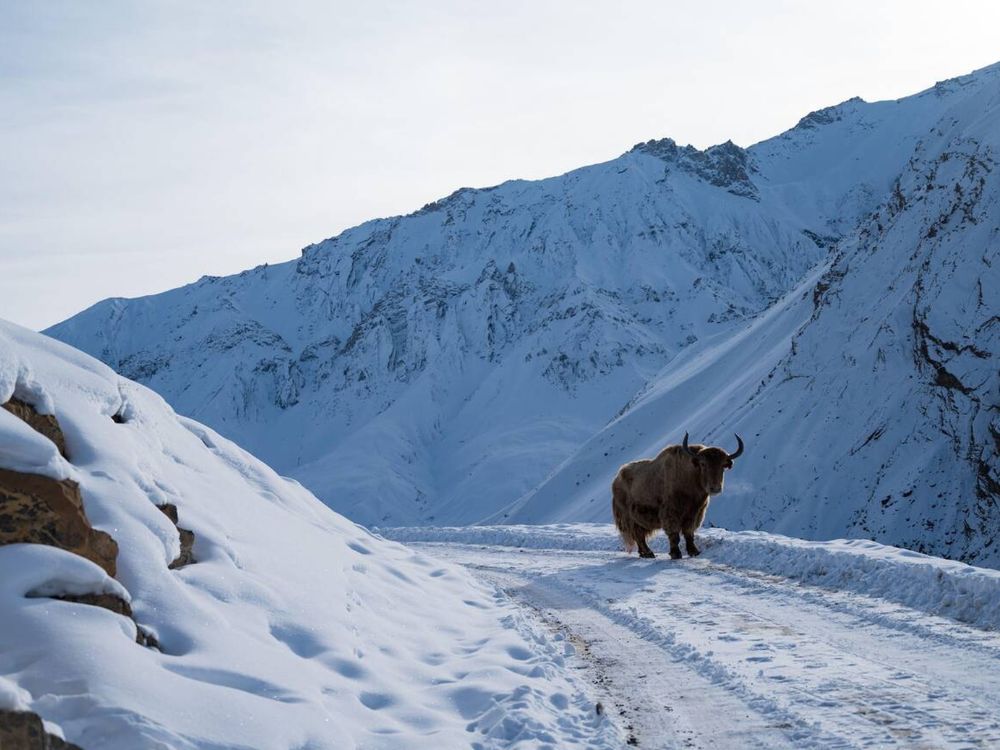
Snow Leopards are the most charismatic species of the Himalayas. Snow Leopard habitat is high altitudinal region with abundant snow. The morphological feature includes, grey-white fur with its dark spots and rosettes. Snow Leopards have short forelimbs and long hind legs, which allow them to traverse and stay agile in steeped terrains.
They camouflage very well against the rocky surroundings. They hesitate interacting with humans. They prefer rocky mountains and the rocky surroundings.
Kibber village is one of the highest villages in the world, it is the popular base for snow leopard tracking. Langza and Hikkim are also known for stunning landscapes and wildlife sightings. It is the highest motor-able village of the country, located 6 km from Chicham. It has the Kibber Wildlife Sanctuary which is divided into an outer buffer zone and inner protected area. The wildlife included in that region is the ibex, Snow leopard, Tibetan wolf, Red fox, Wooly hare and Golden eagle.
The Pin Valley National Park is a key tourist attraction and it is a home to rich flora and fauna. Bestowed with rich flora, the park is home to animals like the Ibex, bharal, Tibetan gazzle, Blue sheep, Himalayan brown bear and ravens.
Read more about about Why visit Winter Spiti valley.
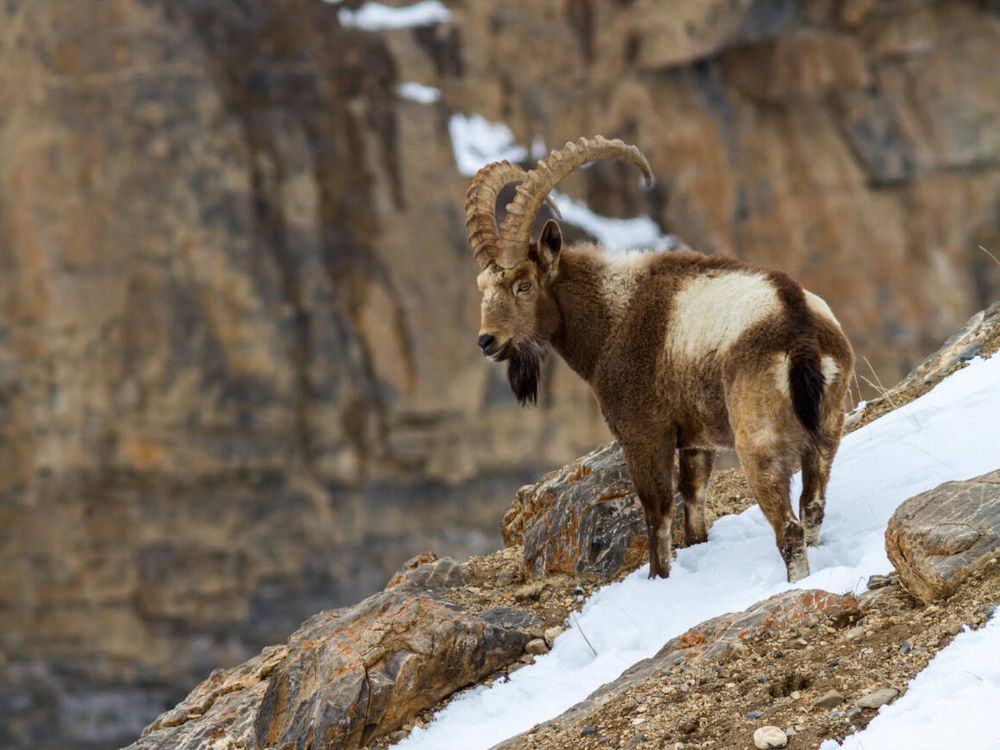
Few facts about Snow Leopard
- It has extra large ultra soft paws so that they can not sink in snow easily.
- Snow leopards have Strong short front limbs and longer hind limbs.
- Has soft and dense fur to keep them extra warm during winters.
- Due to grey white fur( with dark spots and rosettes) it camouflages easily in snow.
- They remain active in dusks and dawns( referred as Crepuscular) creatures
- They are non aggressive towards humans. They do not attack human beings, if disturbed they more likely tend to leave the site.
FAQs
Are there snow leopards in Spiti Valley?
Yes, there are snow leopards in Spiti valley, winter is the best time to spot Snow leopards because they descend down from high altitude regions in search of prey and which makes its spotting easier. Snow leopards can be found in the Kibber village and the area near Chicham bridge. Kibber Wildlife Sanctuary is the best spot to find Snow leopards and other wildlife found in Spiti Valley.
What animals are found in Spiti Valley?
The Spiti valley wildlife is quite different which includes marmots, blue sheep, Himalayan red fox, ibex, musk deer and the elusive snow leopard. In winters the Ibex and blue sheep come down the valley in search of grass and can be seen near Kibber village.
Can we see snow in Spiti valley?
We can witness snow in Spiti valley in winter months (November to March). The region receives heavy snowfall, leading to extremely harsh weather conditions. The Spiti transforms into a winter wonderland. You can do various snow adventure activities like skiing, snowboarding and stargazing in Kaza.
Kibber in Spiti valley?
Kibber in Spiti valley is one of the highest villages in the world, it serves as the base camp for Kibber Wildlife Sanctuary. It is a home for wild animals, such as Himalayan Ibex, Red fox, Himalayan wolves, Tibetan woolly hare, Yak, Pika.
Is the Milky Way visible in Spiti Valley?
The Milky way galaxy is visible from Kaza because of high altitude and less pollution, you can see the clear skies and gaze at the ethereal glimpse of the Milky Way galaxy. Spiti Valley is situated at an altitude of 12,500 feet above sea level which is ideal for stargazing.
Witness the rare and majestic snow leopard in its natural habitat amidst the breathtaking landscapes of Spiti Valley. Don’t miss the chance to create memories in the heart of the Himalayas. Book now with JustWravel and be part of this once-in-a-lifetime journey!




